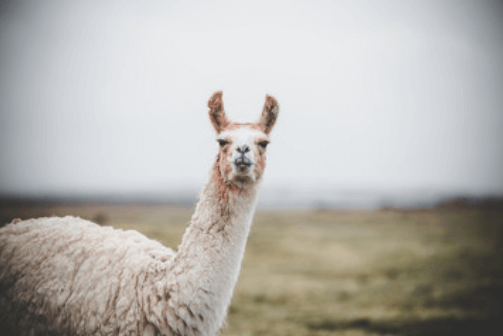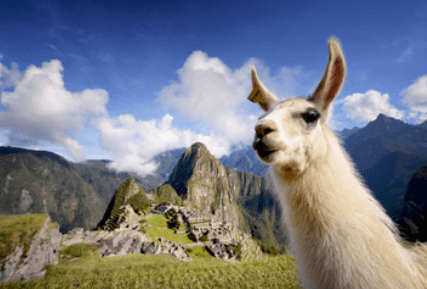Dogs, cats, goldfish, and maybe a hamster is what usually comes to one’s mind when they hear the word pet. Everyone has their own preference when it comes to keeping a pet. While most people would opt for a more conventional choice, others might want to keep a pet tiger, horse, or even a llama.

Llamas are domesticated animals native to the moorlands of South America. Conventionally, they have been used to carry stuff around and are considered to be livestock, but many people cherish them for their friendly, social, calm nature and the fact that they can easily be trained.
Llamas make great companions and pets because of their highly predictable low-key temperament, ease of maintenance, and intelligence. Llamas are now becoming popular pets due to their cleanliness and friendly dispositions. Their lifespan is estimated to be between 15 and 30 years.
Taking care of a llama is no joke as they are not small animals. They weigh around 250 to 450 lbs and can be about 5′ to 6 “5′ tall. So, if you get a llama as a pet or to raise as livestock, you will need to understand how to meet its basic needs, feed it, and provide it with adequate space and shelter.
Once these needs are met, your llama will be a happy and healthy animal. Llamas are usually healthy, prosperous animals that require little upkeep beyond good primary care. Nevertheless, before you decide to keep a llama, you will need to have a basic understanding of this animal and its particular needs.

- Health Needs
The first and foremost thing you need to do is take your llama to an experienced livestock vet. There are many 24-hour vets available worldwide, and only they can better guide any llama owner on how to take care of them properly. The large animal vet would guide you on everything from the llama’s vaccination to its diet.
It is imperative to get in touch with a 24-hour vet in case of any medical attention needed by your llama. Since these animals are always outside, its essential to get regular check-ups to make sure they are healthy. You will want to check their fleece to see if they have any wounds that need to be tended to.
- Food Requirements
All llamas tend to eat grass and hay. Ideally, they should be fed orchard grass and can also have alfalfa, but it should never constitute more than 20 percent of their diet as too much alfalfa can cause a mineral imbalance. They also need a good supply of water.
- Creating a Healthy Environment
Llamas should be provided with an open space or pastureland to roam about in and a fenced shelter to stay and sleep in. There shouldn’t be any overcrowding as it can cause the spread of disease. Along with that, they shouldn’t roam around in an area with a running stream or water supply as they tend to lounge in it and ruin their fleece with fungus.